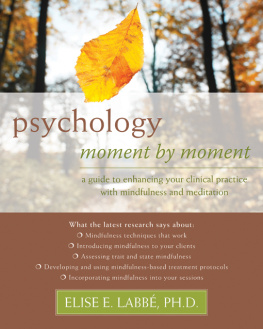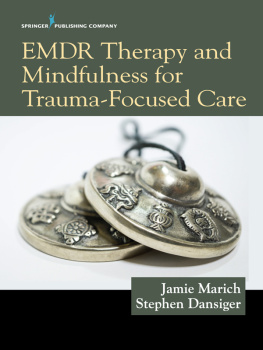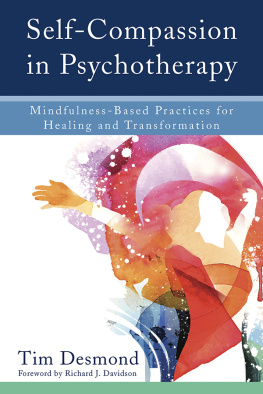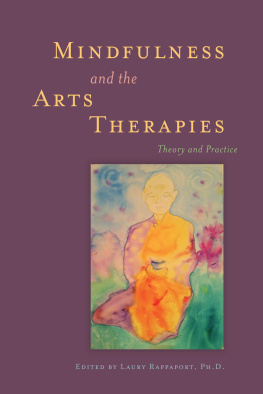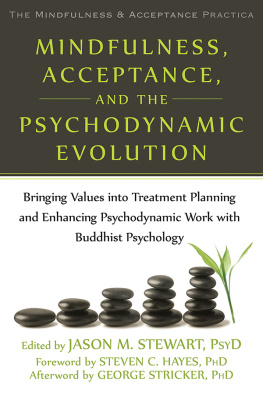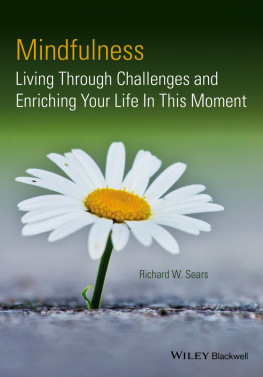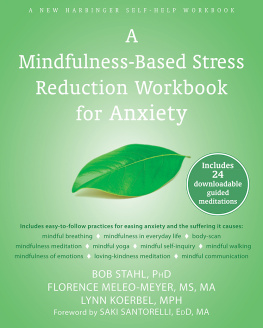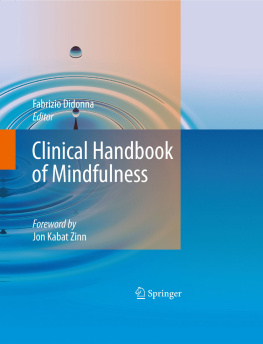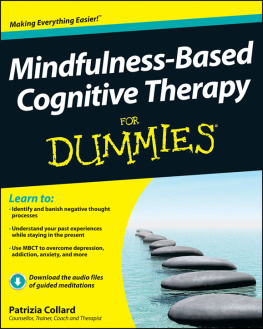Elise E. Labb, Ph.D., is a clinical psychologist and professor of psychology at the University of South Alabama in Mobile, AL, and clinic director of the USA Psychological Clinic. She has published numerous research papers in clinical and health psychology and presents at national and international conferences. Labb has earned several awards, including the Phi Kappa Phi Scholar of the Year Award, the Ouroboros Award, Whos Who in Biobehavioral Sciences, and university excellence in teaching and service awards. She is the editor in chief of Journal of Sport Behavior, is on the editorial board of Journal of Applied Psychophysiology and Biofeedback, and has been invited to review a number of clinical and health psychology journals. Labb teaches and researches mindfulness and has practiced meditation for over thirty years.


Publishers Note
This publication is designed to provide accurate and authoritative information in regard to the subject matter covered. It is sold with the understanding that the publisher is not engaged in rendering psychological, financial, legal, or other professional services. If expert assistance or counseling is needed, the services of a competent professional should be sought.
Distributed in Canada by Raincoast Books
Copyright 2011 by Elise E. Labb New Harbinger Publications, Inc. 5674 Shattuck Avenue Oakland, CA 94609 www.newharbinger.com
Cover design by Amy Shoup
Acquired by Melissa Kirk
Edited by Jasmine Star
All Rights Reserved
ePub ISBN: 9781608822362
Library of Congress has cataloged the print edition as:
Labb, Elise E.
Psychology moment by moment : a guide to enhancing your clinical practice with mindfulness and meditation / Elise E. Labb.
p. cm.
Includes bibliographical references and index.
ISBN 978-1-57224-895-3 (pbk.) -- ISBN 978-1-57224-896-0 (pdf ebook)
1. Mindfulness-based cognitive therapy. 2. Meditation--Therapeutic use. I. Title.
RC489.M55L33 2010
616.89--dc22
2010045908
I fell in love with you, my son, the moment I held you in my arms. You lived life large, giving yourself to the moment, and always told me to go for it. In your honor I dedicate this work to you, Joel Richard J. Labb, 19832006.
Acknowledgments
I had great fun writing this book. Thanks first to Melissa Kirk, who invited me on this journey and taught me a lot about writing and publishing along the way. Jess Beebe, I am grateful for your feedback and helping me translate research and practice into this book. Jasmine Star, thank you for the detailed and gritty work you did to help me make this book better than I could have on my own.
I am grateful for my graduate students who kept me on my toes and cheered me on: Jessica Shenesey, Brittany Escuriex, Melissa Womble, Ryan Cochran, and Jay Champagne. Thanks to Sr. Ann Henkel, my spiritual director and big sister, who not only helps remind me of the important things in life but told me Id better write this book! Thanks to Dr. Cay Welsh, my dear friend, other big sister, and fellow mindfulness practitioner, for her faith in me.
Thanks to Dr. Andre Betancourt, my oldest daughter and grammar queen, who read the manuscript and gave me feedback and encouragement while bringing my first grandchild into the world. Thanks to John Betancourt for his enthusiastic endorsement of my work and a glass of wine to enjoy. Thanks also to my parents, George and Cha Labb, who taught me about openheartedness. It has been good to have my little sister, Barbara Labb Gaddy, as a kind sounding board for my ideas and projects. Thanks to my daughter Calley, who reminds me to stop and smell the roses and who is an expert at being in the moment. I appreciate Brittany Roybals quiet support and willingness to help out when needed. I am grateful for Cosmo, my oldest son; together we have plumbed the depths of sadness and in the process found great joy. I also thank him for his awesome help and expertise in all things technical, including developing my website, www.eliselabbe.com. I am grateful for Ross, my youngest child, as he frequently looked over my shoulder while I was writing this book and surprised me daily with his eagle eye and words of wisdom. I am most grateful for my husband, Bruce Coldsmith, who has encouraged me at every step of the way and challenged me to hang in there through the inevitable crisis of faith one encounters in such a journey.
Foreword
I had the pleasure of meeting Elise Labb so long ago I am sure neither of us wishes to remember exactly when. Although I cannot remember the date, I vividly recall my first impressions of her, which have endured. Here was a bright, talented scientist-scholar; someone more mature than her young age would suggest; someone who would be going places. At that time, we were engaged in similar research endeavors, and that alone might have accounted for my interest in following her work and budding career. However, there was more than that. I was witnessing her growing in stature, expanding her reach, and accomplishing more than is typical in the academic setting. Our research interests have diverged somewhat over the years, and our paths no longer cross as often as I wish. When she and her publisher asked me to prepare a foreword for this text, my answer was an enthusiastic yes. Here was my chance to catch up with her current work. The timing could have been better. I had just accepted a new position at the University of Memphis and was busy wrapping up my term as president of a national scientific society. For anyone else, I would have had to decline. In fact, I tried to convince myself to pass on this opportunity. But, for Professor Labb, I simply had no choice. And having read this text, it is clear I made the right choice. I predict with confidence that readers will feel likewise.
Why am I so enthusiastic about her book? Why could I not put it down? Here are just a few of the reasons. In many academic endeavors, scientists do science and practitioners do practice, and never the twain shall meet. Neither group seems to fully appreciate or understand the other. Each camp has well-articulated reasons for staying within the safe confines of their boundaries. Professor Labb, thankfully, is a member of a new group of professionals, a group that firmly believes these two camps must meet around the campfireno, not singing Kumbaya and pretending differences do not exist, but discussing these differences, learning from one another, translating the findings of science to effective practice, and seeking feedback from those in practice to make sure the translations reflect what the practitioners believe is truly important. Professionals who are likely to be most successful in bridging these camps are people like Professor Labb, who is deeply familiar with the science as well as the practice. She knows what the science says to do and she knows how to implement the science in real-world settings. Further, she has that unique gift of being able to instruct in a way that is understandable to people at all levels. Mindfulness and related approaches are quite popular, and books abound. Many begin with the premise This is what I believe or This is what I have found works. Professor Labb takes a refreshing approach, going where the science takes her.
As a child, I remember elders telling me things like Stop and smell the roses and The journey is more important than the destination. All of this sounded nice. How could anyone disagree with that advice? Yet, no one could answer my question about how this was best accomplished. Well, after reading this book, you will have lots of answers, answers grounded in science and tempered with Professor Labbs wealth of clinical experience. My intent in this foreword is only to whet your appetite. I leave it to Professor Labb to serve up the dishes. Savor the chapters to come. You certainly will not regret itand you may just learn things of value not only to the clients you serve but to yourself as well.

